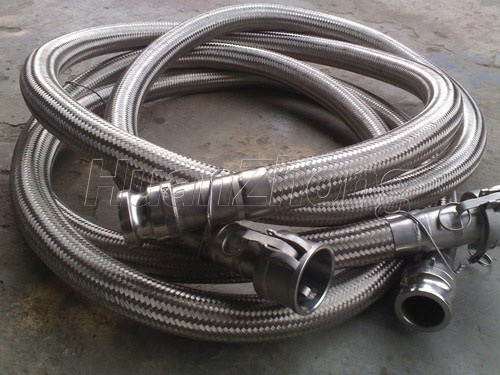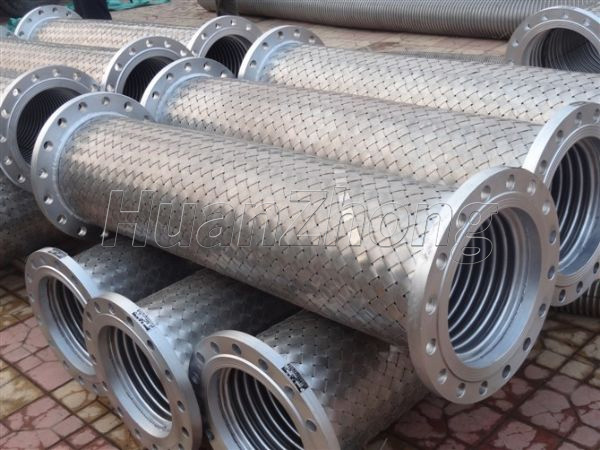What are the uses and classification of metal hose?
Metal hose is a common connection in the pipeline, its structure is mainly inside the bellows, outside the woven wire mesh sleeve, both ends to connect the flange as the main, the joint or welding connection as a supplement. Metal hose overall made of stainless steel materials, with strong corrosion resistance, while having strong flexibility, expansion, bending and vibration resistance, woven wire mesh sleeve to strengthen the protection, so that it has a higher pressure-bearing capacity. The caliber of metal hose is generally 5mm, 100mm.
Metal hose working pressure category is generally PN0.6-32.0MPa. metal hose for different applications provide for different connection methods: metal bellows, plastic mesh bag and connectors connected by welding, known as welding; mechanical equipment clamping connection, known as mechanical equipment clamping, also known as mixed teaching. Up to 42.0MPa.
Metal hose must cross type or work when it is likely to produce friction with the surface of the equipment in the area, the use of plastic hose clamps or torsion springs and other protective equipment to prevent damage to the surface of the metal hose. Metal hose is a corrugated arrangement into a spiral structure of the tubular shell. There are spiral angles between two adjacent corrugations, and all corrugations can generally be expanded by such a spiral line connection.
Metal hose is a modern industrial pipeline is widely used in a flexible articulated pipe. It is mainly composed of a flexible body (corrugated pipe), a mesh body and a variety of different methods of jointing. Its inner tube is spiral or ring-shaped thin-walled stainless steel corrugated pipe, metal hose outer mesh cover is made of stainless steel wire, steel wire woven belt or steel belt woven according to certain parameters. The joints at both ends of the metal hose can be equipped according to the user's pipeline or equipment joint method.

